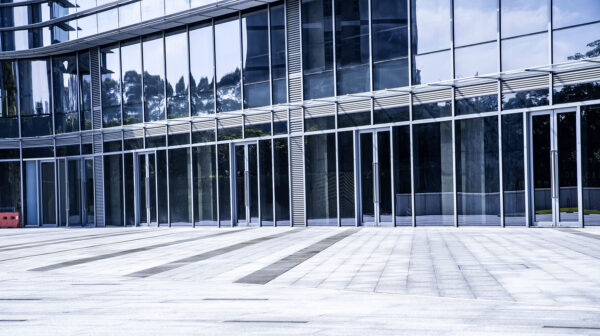A typical commercial lease places most or all of the responsibility for repairs and maintenance on the tenant, except that the tenant’s obligations may be limited in respect of reasonable wear and tear, and the landlord may be responsible for structural repairs. The obligations under the lease may be described as being those of a “prudent tenant” and “prudent landlord” or that the premises must be maintained to a “first class” standard. A large body of court decisions has developed around the interpretation of the words “structural repairs” “reasonable wear and tear”, and “prudent”. This communiqué examines the meaning of typical repair and maintenance obligations under a commercial lease and offers ways to reduce risk for both the landlord and tenant.
Many commercial leases provide that the landlord will be responsible for “structural repairs”. Unless the scope of structural elements is expressly identified in the lease, the common interpretation of a structural element is one which is necessary to hold the building together, such as foundations, walls, roofs and floor structures, as opposed to an element which is necessary only for the use made of the building such as partition walls, stairways and windows, or merely “decorative” features such as carpeting. Mechanical systems, such as heating and plumbing, are generally not considered structural elements. Accordingly, most of the responsibilities for repair and maintenance of building elements that require maintenance will fall to the tenant.
“Repair” and “maintenance” are separate but related concepts. “Maintenance” contemplates taking steps to avoid deterioration of the building and its systems through preventative and corrective measures. Examples of maintenance might include painting, cleaning, servicing and lubricating equipment, clearing drains and gutters, and replacing light bulbs. A “repair” contemplates damage to a portion of the premises which needs to be fixed. Obviously, anything damaged by the tenant must be repaired by the tenant. However, when a component is worn out and requires repair, a dispute may arise about whether the component is worn out due to poor maintenance or due to reasonable wear and tear despite regular maintenance.
The common exception for “reasonable wear and tear” exempts a tenant from liability for remedying building components and systems that wear out or come adrift in the course of reasonable use, but it does not exempt the tenant from anything else. The reasonableness of wear and tear will depend on the use of the premises; wear that would be reasonable in an industrial shop will be completely unacceptable in a retail space. It is important to note that if further damage is likely to flow from the wear and tear, the tenant must do such repairs as are necessary to stop that further damage.
There are many expressions of the expected standard of repair including: “first class state of repair”; “good and substantial repair”; “as a reasonable and prudent landlord would repair”; and “in good and tenantable repair”. However, few of these descriptions are, without more, very helpful. Courts have indicated that maintenance to the standard of a prudent owner/landlord is a higher standard than that of a prudent tenant. Otherwise, the standard can be entirely subjective and, in the event of a dispute, the outcome will be hard to predict.
As often occurs in business, the concepts in a lease are seemingly well understood and adequately defined when the landlord and tenant are on good terms at the outset of the lease. As time goes on, and various issues arise, the once mutual understanding of the standard of repair may start to diverge. Accordingly, it is best to clearly define the obligations to reduce uncertainty.
A well drafted lease will outline standards to which the premises will be maintained. Wording might include reference to industry standards for heating and ventilation, to operations manuals, or direct that the tenant must follow the recommendations of a qualified contractor. The lease may also simply prescribe a frequency for specific maintenance tasks.
When the tenant fails to perform its repair and maintenance obligations, the landlord will first have to give notice of default. Most leases define a period for the tenant to cure the default. If the tenant does not cure the default, the landlord will have the option of terminating the lease or stepping in to fulfill the tenant’s obligations.
Termination of a lease is a risky exercise for the landlord except in the most compelling circumstances, as courts will often grant the tenant relief from forfeiture, and may even award damages to the tenant if the lease was terminated without sufficient cause. If the landlord steps in to perform the tenant’s obligations, the landlord will have a right to recover those costs from the tenant, but no certainty of ever actually recovering anything from the tenant. Accordingly, the best approach for a landlord is to conduct periodic inspections of the building and enforce the repair and maintenance obligations before the situation gets out of hand.
Regardless of the underlying reason that at tenant has failed to perform its repair and maintenance obligations, the tenant may argue that the poor condition of the premises is due to wear and tear or that the condition is the same as it was at the start of the term of the lease. The landlord can protect against the tenant’s allegations by establishing and recording a baseline building condition. This can be done by conducting a building survey at the outset of the lease and at the start of each renewal using qualified professionals and having the tenant sign off on the survey.
In conclusion, even the best tenant will be mindful of cost control and will want to do no more repair and maintenance than required under the lease. Clear obligations, well defined standards and documented conditions at the start of the tenancy and at each renewal will help both the tenant and the landlord reduce the risk of misunderstanding and disagreement later on.


